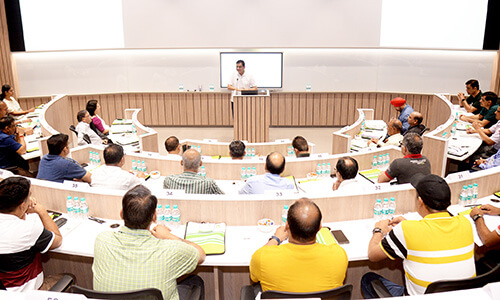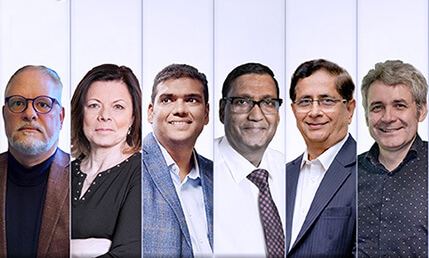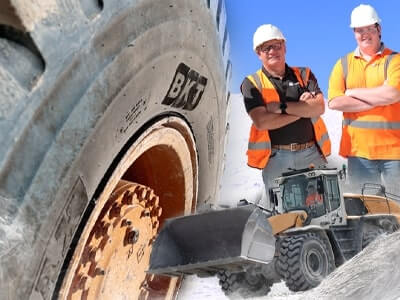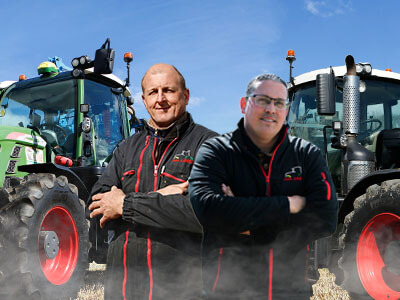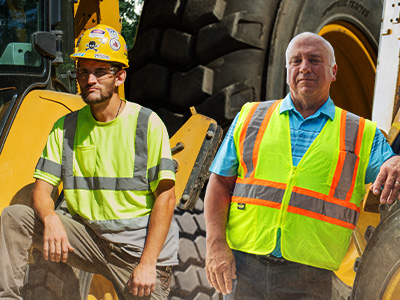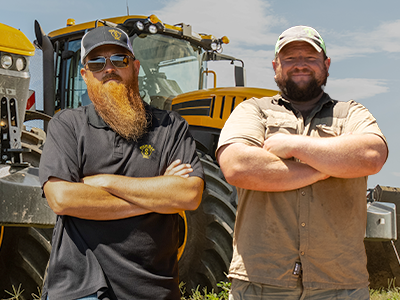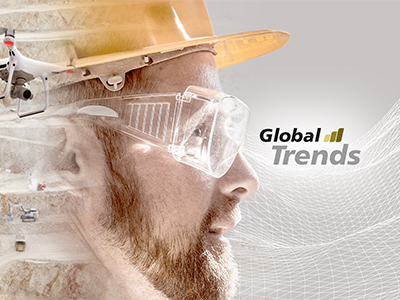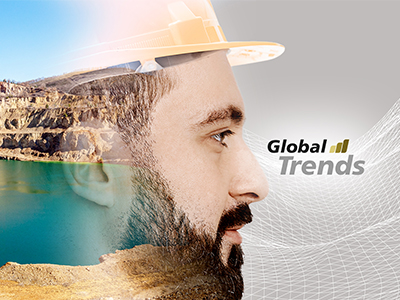And our next guest is someone who’s developed an ‘alternative energy’, but in a very different sense.
AutoStem Technology is a South African company that developed and innovative new blasting technology. Here to tell us more is Jonathan Cohen.
He is the Director of Product Commercialization for AutoStem Technology with 11 years of experience in the field of explosives. He headed a team that developed AutoStem Technology which is the only explosive technology available nowadays on every continent.
Jonathan, come and join us!
Jonathan, welcome to Global Trends.
Thank you, Saana.
Amazing, so let’s start right away. Why do we need a better blasting technology?
Ok, good question. Traditional explosives have been the same for the last 100 years.
In a traditional civil explosive, you’ve got a material that burns terrifically fast – up to 7,000 metres per second. But the speed of sound is only 340 metres per second, so once you have that flame front moving faster than the speed of sound, you have a shockwave.
Like a sonic boom from an aircraft?
It’s exactly right. In a tightly bound material such as rock, subjecting it to a shockwave produces a breaking phenomenon – essentially, the rock is shattered.
But that shockwave is uncontrollable. Nearer to the blast, you invoke a disproportionate amount of damage.
So, we asked the question – can we develop an explosive that functions without shockwave?
Then your inferred damage would be local exactly where you want it.
To some people, Jonathan, that might seem like an impossible ask. Surely that shockwave is a natural consequence of an explosion?
Well, we tried to decouple two variables which are seen as intrinsically linked: velocity of detonation, and effectiveness of the product.
OK.
By decoupling these variables, we developed something special. A product that can be used for civil operations – mining, construction, etc – without the consequences of conventional explosives, like shockwave and unwanted damage.
If you’re bringing down a building, or blasting rock, you want the local effect on rock but without damage to nearby structures, or tunnels, for example.
In underground mining, this is even more important. With conventional explosives, you pulverise the orebody. It’s typical to have upwards of 20 or 30 per cent of your high-value commodity pulverised during the blasting process.
So, the very act of blasting loses material?
Exactly right. It’s accepted and priced into the mine economics.
What percentage of the underground commodity – iron, gold, copper, platinum – is destroyed in blasting? If you’re running a mine where you’re recovering more than 80% of the commodity, you’re mining in a very sophisticated manner.
I see. But if you can avoid the shock phenomena…
…you don’t have the pulverisation effect and you’re not destroying your high-value commodity.
How do you do you that? How do you have an explosion that brings the rock out without a shockwave?
It’s a good question. That’s science: we looked at unconventional energetic materials, but which would still deliver a fast-burning speed. I’m not talking about 7,000 meters per second, more in the order of magnitude of 300 meters per second.
That’s quite a difference. How does it work?
To use explosives, you drill a hole in the rock. In an open-cast mine or quarry, your bench height will be 10 or 20 meters, in an underground mine you’ll have an advance per blast of maximum 5 meters. Pump that hole with conventional explosives, apply detonators and blast.
With AutoStem, you drill the hole, insert the cartridge. Once it’s activated, it releases a high volume of gas, confined within the rock – and that’s what creates the high pressure needed to break up the rock.
In addition a conventional explosive requires the blast to physically close the hole, with sand of gravel material before initiating the blast to confine the explosion; the AutoStem cartridge performs that function itself during its initiation! Hence, the word AutoStem.
And all of this happens without any pulverisation?
Absolutely.
Ok, so if I have understood this right, you’re forcing the rock apart, but doing it without that raw explosive power that creates the shockwave?
Yes, exactly.
We describe our technology as the world’s first non-detonating blasting product. We don’t even call it an explosive, because of the connotations with shock and wasted energy.
Your product would be a very disappointing firework?
Yes, very disappointing! But it’s an interesting point. The explosives world is dominated by seven large producers, essentially one on each continent. Practically, you can’t compete – how do you ship explosives from the US to Europe?
Our product, because there’s no shockwave, allows us to export it even on a passenger plane. It was an exhaustive process to achieve that UN categorization, but it’s now in the same class where you’d find a car airbag.
Jonathan, why would a company choose to switch to your blasting technology, rather than conventional explosives?
For every reason that we offer a technical advantage.
It’s safer – our product cannot detonate. You’ll find the miner who, all his life, has been handling violent and dangerous explosives and which do you think he’ll choose?
Yield-wise, a conventional explosive can never achieve the yields that you’ll get from our blasting technology.
Economically, you need none of the accessories required to set off your detonation. You cut out all the magazine requirements to store explosives. And permitting – that can take months to get the approval to have explosives on site, whereas our product can go anywhere in the world within 24 hours.
Sounds amazing!
Thank you. We’re the only company that can offer a blasting technology on every continent, which is something we are very proud of.
One of the most satisfying things is offering a demonstration, on site. With conventional explosives, you’ll have to set up an exclusion zone, 600m, a kilometre, maybe more. You’ll have to remove equipment, staff. You have to plan it in advance.
But what we’ll do is to take a huge boulder, put it in a front-end loader, and break it up with our cartridge. It will break that boulder in the bucket, without damage to the loader – showing just how focused that blast is.
Are non-detonating explosives the future of civil blasting?
We firmly believe so. We have patents, of course, but we’ll eventually have competitors. But in terms of the tech, the science, 20 years from today it will be the mainstream technology used.
What about training? Your product is currently deployed by those who’ve had explosives training…
Yeah, the guy who knows how to handle explosives, when he moves over to our product, we use the analogy that it’s like someone who’s trained to drive a 44-tonne heavy goods vehicle transferring to a MINI. It’s going to be easy.
Storage, transport and use of explosives are different in every part of the world but someone who knows how to use explosives will be fine with our product.
Let’s hark back quickly to our previous topic, where we looked at sustainability. Is your product more efficient in what it does?
Almost certainly. Side by side, our technology will use – in terms of mass – approximately 40 per cent less than the conventional explosives to achieve the same result.
Jonathan, this is a fascinating technology. It’s got our audience interested too – so let’s put you on the spot with a question taken from our socials… Are you ready for the question?
Bring it on!
Ok! Are there any environmental advantages to your product?
Sure.
By not pulverising your ore body, you increase yield. That’s better resource use. And the gas profile from our product is inert, unlike conventional explosives. That’s particularly important for productivity – you can get personnel back into the mine sooner, which means less energy expended in ventilating the mine to remove those gases.
Jonathan, thanks very much for joining the program. Stay with us – we’ll discuss more in just a moment.
Well, we promised you a sideways look at alternative energies. I think you’ll agree we delivered it.
